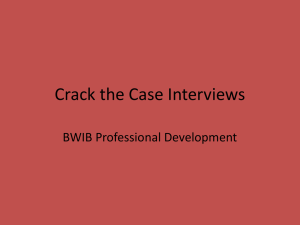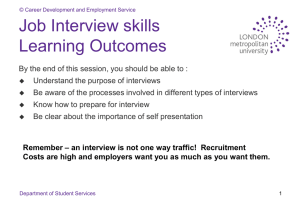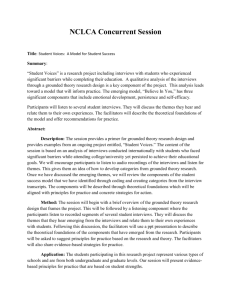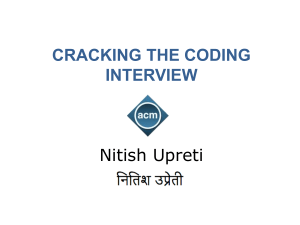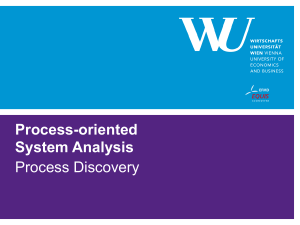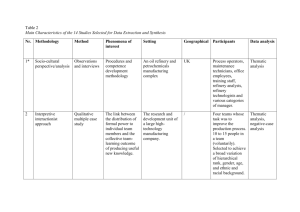Research Methods (Pp..
advertisement
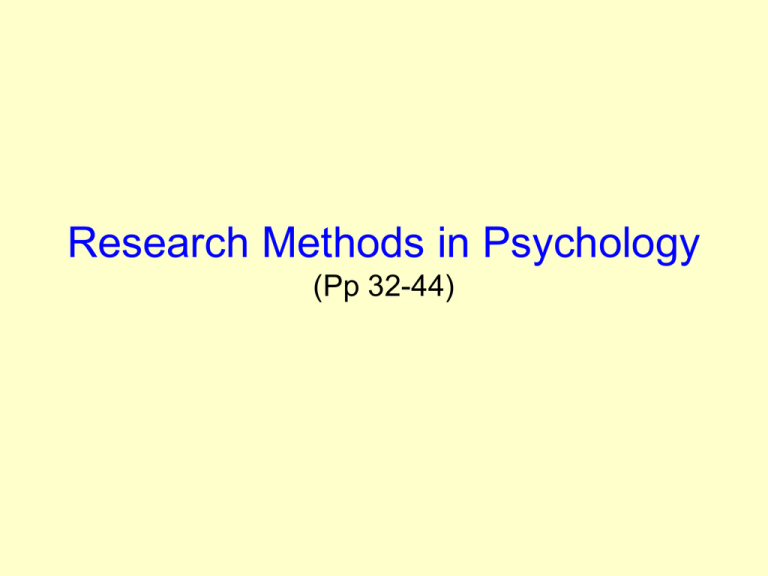
Research Methods in Psychology (Pp 32-44) Purpose of Interviews To get someone’s point of view by asking questions Interviewing Styles • Nondirective • Informal • Semistructured • Structured but open-ended • Structured Nondirective Interviews • Conversational where participants talk about anything they want • Goal is to help participants understand themselves (therapy sessions) more than to gather data for a study Informal Interviews • Conversational in nature but researcher wants to gather data for a study • Interviewer keeps interview focused on a general topic Semistructured Interviews • Researchers have a specific topic but questions are not asked in the same way to all participants • Meant to be flexible and interactive with followup questions common • Can be done one-to-one or in focus groups • Some us narratives and/or vignettes Semistructured Interviews Advantages • Provides a rich account of a person’s situation • Questions can be adapted to probe the context and meaning • If relaxed, participants are likely to give detailed responses Disadvantages • Reliability can be poor • Use of small samples common • More training required Focus Groups Advantages • A natural setting allows people to express their real opinions • Hearing others’ responses helps participants think of other points or clarify their opinions • Feeling their opinions count, people feel empowered • Interactions among members provide richness and depth Disadvantages • After participation in a focus group, an individual’s attitude may become more extreme • Only one topic at a time can be discussed • Individuals have less time to talk • Group moderator may unknowingly inject bias Narrative Interviews Advantages • Since narratives allow people to “tell their story”, these interviews provide a rich form of data • Narratives provide a window into someone’s life context Disadvantage • Coding (creating categories about important emerging themes) individual stories from an entire group may be challenging Structured but Open-ended Interviews • Preset questions asked • Interviewer still allows participants to respond any way they wish Structured Interviews • Data collected with a predetermined scale (ie, Likert Scale) • Most objective, requires less training to administer and reduces researcher bias • Lacks the richness of less structured interviews Considerations Involved Before an Interview • • • • • Choice of interviewer(s) Logistics Ethical issues Good questions Minimize demand characteristics and researcher bias • Scheduling details Considerations Involved During an Interview • Create and maintain good relationships • Be aware of recording process • Remain empathetic • Manage sensitive areas Considerations Involved an Interview After • Participants should feel appreciated, be told how to obtain results of the study and be allowed to withdraw data if desired • Transcribe interview using verbatim transcription or postmodern transcription Inductive Content Analysis (Thematic Analysis) A process for analyzing interview transcripts by organizing it into categories according to important themes that emerge. Coding is central to organizing raw data into coherent categories which is hard work and time consuming. Coding Process (Interpretative Phenomenological Analysis) • Researchers read and reread transcripts reflecting on what is being said • Specific themes are identified and named • Categories are named based on clusters of themes • A summary table of the theme categories is created One more thing before the end! IB Video http://occ.ibo.org/ibis/occ/home/subjectHome.cfm?subject=psych


